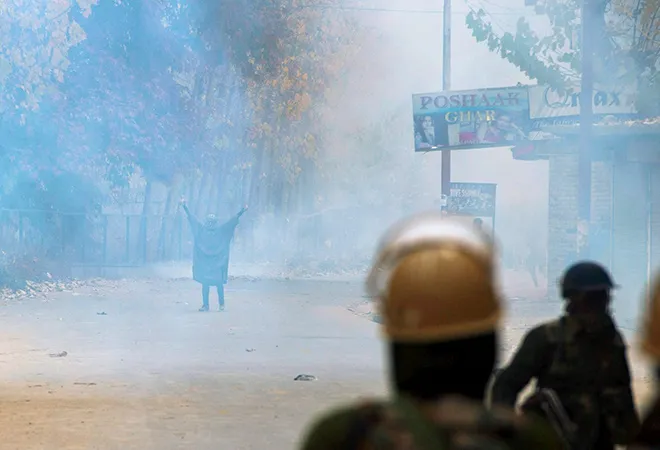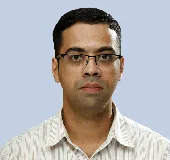
Recently, Chief of Army Staff General Bipin Rawat mooted the idea of establishing a new Directorate General of Information Warfare (DGWI). It could be a mere co-incidence, but his announcement came days after a newspaper advertisement published by Pakistani terrorist organisation Lashkar-e-Toiba (LeT), openly inviting youngsters to join their cyber jihad in Kashmir. It is indeed the need of the hour to have a dedicated wing of experts who can communicate with their target audience with precision and speed, but what emerges is that, while New Delhi is still talking about countering the information warfare waged by terrorists, the latter have progressed to the next level of conducting ‘instant warfare’ against India.
The importance of information warfare cannot be undermined, because in the information age, the success of military operations cannot be measured only on the basis of its on-the-ground victories.
In population-centric counterinsurgency areas like the Kashmir Valley, the success of military operations heavily depend on public opinion. While the ability to influence the domestic and international audience as well as the people of the conflict zone has always been very crucial, the globalisation of media has opened up multiple and personalised avenues of making and breaking public opinions, a process in which, so far, Pakistani terrorist organisations have enjoyed an upper hand over the Indian state. New Delhi, on the other hand, is yet to develop niche capabilities.
In Kashmir, information warfare dates back to the late 1980s and early 1990s, when anti-India elements communicated with the Kashmiri society through local newspapers, leaflets, mosque announcements on loudspeakers, elimination of pro-India and moderate voices, sloganeering (which was not only anti-India but had serious religious undertones) and shutting down of cinema halls by dubbing them as un-Islamic. While this continues till date, digital media platforms have emerged as the new tools for radicalisation. Social media has been weaponised to wage a psychological war of deception, which has spread at a ferocious speed. The total absence of any Indian agency to either control its outreach or check the veracity of the information has only accelerated its spread and strengthened its influence. Constant stream of such inflammatory messages on the social media has created perceptions which are impossible to be negated or countered in a given timeframe. They impact the population and inflame the youth even before such information reaches the government corridors.
In Kashmir, there is an avalanche of information, which penetrates every household through numerous satellite television channels and mobile phones.
The state and media houses are not the only news broadcasters. The demography of the producer and receivers of news and information has expanded multiple times. There are four key players in this new digital game of perception management in Kashmir: the victim population i.e. people of the conflict zone, the terrorist organisations i.e. agents of change, the adversary nation and the international audience. The priority are the first two categories, which need to be dealt with the help of carving out strategic narratives and innovative ways of communicating them. The latter two, however, fall under the realm of foreign policy and diplomacy.
Exerting influence on the victim population can happen only through strategic communication – integral to which is compelling storytelling. A compelling storyline is crucial to any communication strategy as it has the ability to convincingly differentiate the truth from misconceived notions generated through false propaganda. The Burhan Wani episode is a classic example of effective communication strategy by the terror outfits. While the terror organisations made optimum use of social media to successfully lure the youth towards terrorism, the government agencies, unable to counter the surge of information and instant warfare, resorted to E-curfews. Wani had become the poster boy of terrorism in Kashmir much before his encounter, primarily because he succeeded in narrating his side of the story through the social media.
Strongest of the military campaigns can face strategic defeat if the political and military leadership fail to communicate effectively with the victim population. The pace of waging episodes of dubious war against India has picked up. India’s success or failure will be decided on the basis of its ability to ideologically influence the Kashmiri society. Terrorism and violence has always been an effective way to communicate, which can be dealt with militarily, but shaping behaviours of friends, adversaries and the general population in between, is of utmost importance.
The current debate about Kashmir slipping out of New Delhi’s grip is more about psychological and ideological control and not physical. This can be dealt with only through strategic communication with every player in Kashmir.
In the process, the legitimacy and credibility of information holds the key to winning the trust of the victim population. The process of undermining and delegitimising the terrorist propaganda must work simultaneously. The difference between combatants and non-combatants, protestors and bystanders, foreign and local terrorist organisations has blurred, therefore, the information to be communicated to the society and terrorist organisations cannot be conflicting. The trick lies in constructing a strong narrative based on Kashmiriyat.
Kashmiriyat itself is a unique story, which has been overshadowed by the unending waves of extremist violence. Kashmiriyat needs to be retold and reintroduced into the Valley using the same online platforms and tapping the existing social structure of mosques and mandirs. However, the story will be not complete without the Valley’s aborigines – the Hindu Pandits. Their re-assimilation into the Valley is an inevitable step to build strategic communication and create the much-needed counter narrative.
The views expressed above belong to the author(s). ORF research and analyses now available on Telegram! Click here to access our curated content — blogs, longforms and interviews.




 PREV
PREV


